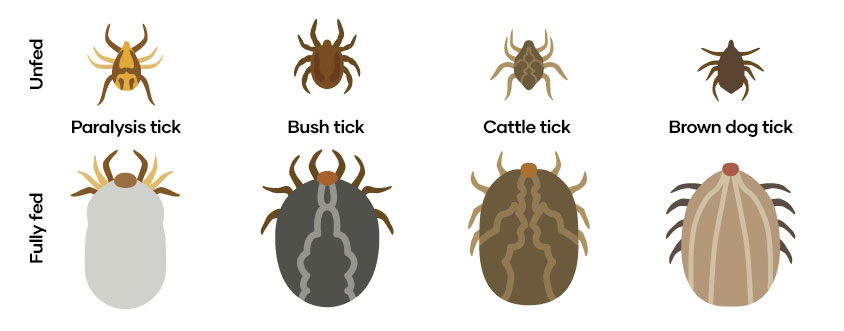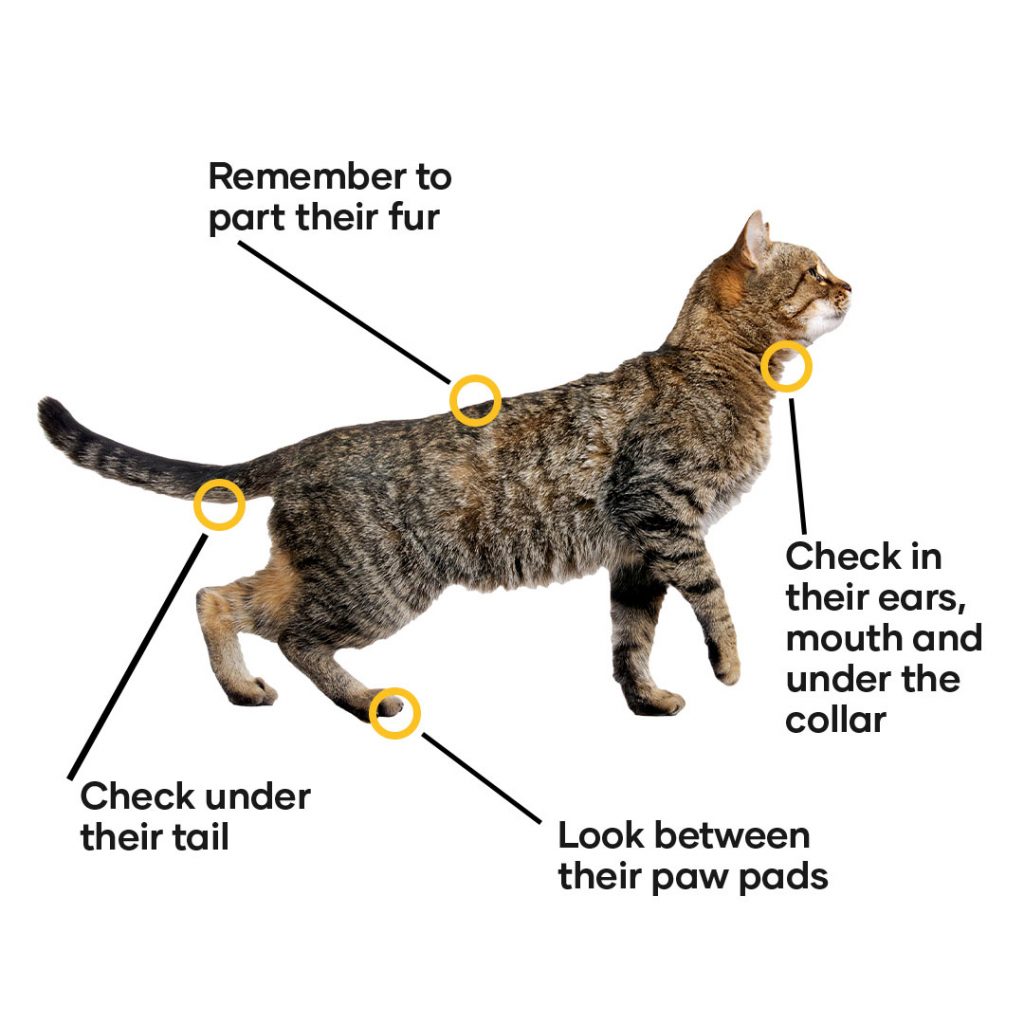Paralysis ticks can be potentially life threatening for cats. Here, a vet shares advice on finding paralysis ticks and keeping your pet safe.
Ticks are a fact of life for Australians all over the country. And while certain ticks impact cats’ health differently, a paralysis tick is potentially life threatening to pets. Here, Dr Adam Sternberg of Greencross Vets shares advice on ticks so you can keep your cat safe and healthy.
Tick paralysis in cats
Tick paralysis is a potentially life-threatening condition for pets. The paralysis tick is a small parasite that attaches to your cat’s skin and feeds by sucking blood. As it feeds, the tick secretes a deadly toxin into your cat’s bloodstream.

What are the risks and symptoms of a paralysis tick bite on cats?
One little tick can spell big problems for your cat! The symptoms of tick paralysis include weakness, dilated pupils, salivation, respiratory noise, coughing, breathing difficulty, a change in the sound of their meow, depression, difficulty in walking and reluctance to jump. Keep an eye out for these symptoms, especially if your cat has been outside.
If your cat starts to become paralysed or you notice any of the above symptoms, their chance of making a full recovery is greatly reduced the longer you wait, so it’s vital to take them straight to your local Greencross Vets if you see the signs. Your cat will need hospitalisation and treatment including an injection of tick antitoxin, sedatives, intravenous fluids, and in some cases oxygen.
Where are ticks found in Australia?

Areas where ticks are commonly found in Australia.
Paralysis ticks are common throughout Australia’s eastern seaboard, from North Queensland down to Victoria. Paralysis ticks are present year-round, but are more common in spring and summer, except in North Queensland where they are always a high risk. Ticks survive well in coastal, humid areas with their ideal environment being long grass or branches so they can latch onto a passing human or animal. Ticks are most active when it is especially humid or after it has rained, so during this period you should be especially vigilant.
How to find paralysis ticks
It’s very important to check for cat for ticks daily. Remember, that these parasites can find their way indoors so even if your cat hasn’t been outside, they can be at risk of a tick bite. Approximately 85-90% of paralysis ticks can be found around the head, neck, armpits, ears and shoulders, but they can occur anywhere. Make sure you examine your cat’s skin thoroughly – don’t forget to check in their ears, around their mouth, under their tail and collar and any other areas where a tick could hide. Between your cat’s paw pads is also a common place to find a tick. Be sure to part your cat’s fur when checking them. Remember, ticks are usually ‘flat’ when they first attach to a cat. Once they have engorged themselves by feeding, their appearance changes to a round shape.

How to remove a paralysis tick from a cat
If you discover a tick on your cat, you should remove it immediately and carefully – you should use tweezers or a tick-removal device. Tick removers are a fork-like device that slides either side of the tick without touching its body, so you may want to have one on hand. If the paralysis tick isn’t removed correctly you can traumatise it and this can have a negative effect on your pet’s health, so if you are not confident, bring your cat to the vet with the tick still attached. We recommended that you visit your local Greencross Vets as soon as possible for a thorough check-over even if you have managed to remove the entire tick.
How to keep your cat safe from paralysis ticks
Giving your cat preventative tick treatments is the best way to take care of them. Try our Flea, Tick and Worm Treatment Finder or chat to a friendly Petbarn team about the best parasite prevention options for your pet.
We also recommend incorporating daily tick checks into your routine. If you live in a prone area, be sure you keep your yard tidy to avoid ticks taking up residence.







Leave a Reply
You must be logged in to post a comment.